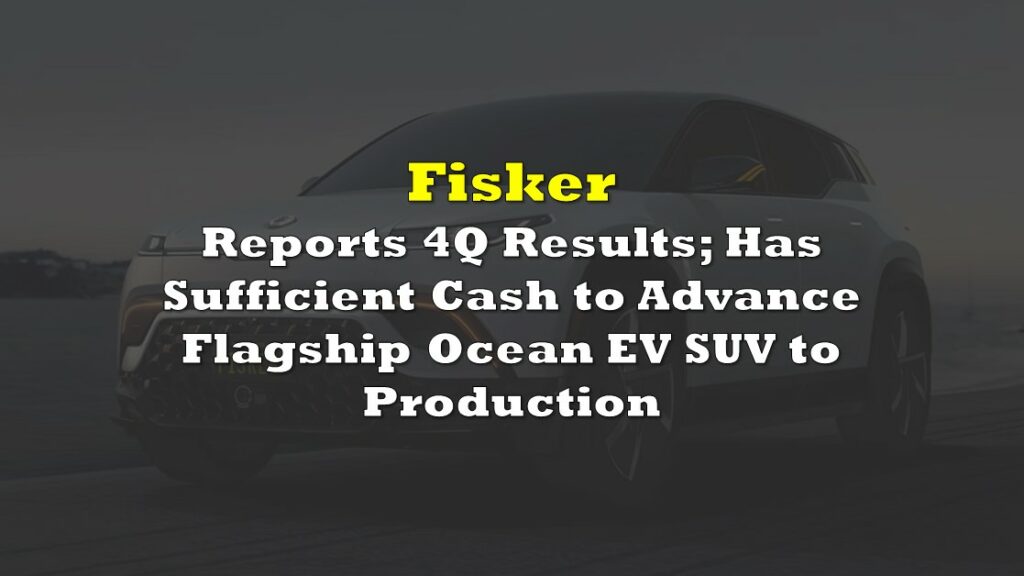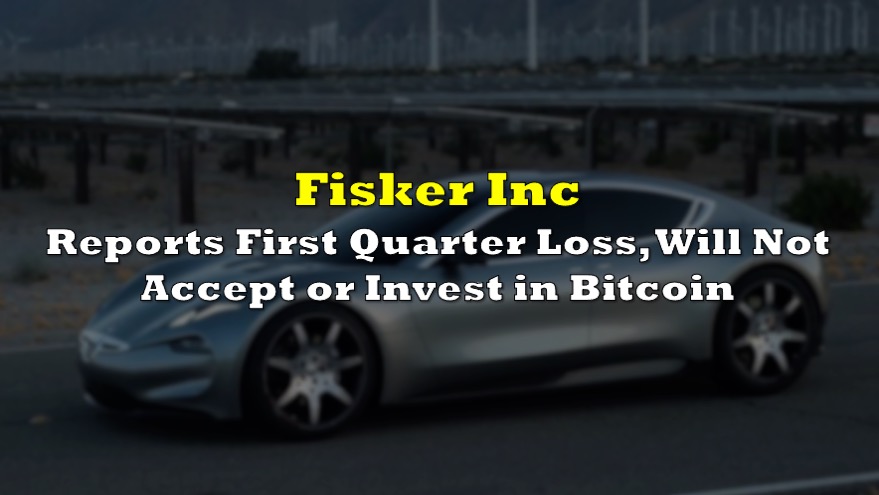Electric vehicle manufacturer Fisker (NYSE: FSR) is bracing for significant changes as it announces plans to lay off 15% of its workforce amid concerns over its financial sustainability. The company, which has been navigating a transition from direct sales to a dealership model, admits it may not have sufficient funds to endure the next 12 months.
Founder and CEO Henrik Fisker acknowledged the challenges ahead, stating, “[W]e have put a plan in place to streamline the company as we prepare for another difficult year.” With over 1,300 employees reported as of September 2023, the impending cuts could affect nearly 200 individuals.
The company shared the layoff news alongside its preliminary Q4 and full-year 2023 financials release where it also raised that “there is substantial doubt about its ability to continue as a going concern.” As Fisker gears up for the second year of production for its Ocean SUV, the electric vehicle manufacturer said it anticipates a decrease in capital expenditures and working capital requirements for the year 2024 and beyond. The success of its business plan heavily hinges on the transition to its new Dealer Partner model.
However, the shift towards a wholesale model reliant on dealership partnerships, the company admits, has negatively impacted sales. Currently, Fisker finds itself with thousands of vehicles in inventory, valued at over $500 million. Although approximately 250 dealerships have expressed interest, only 13 have been officially onboarded.
Observers grew more worried with the fact that Fisker got delayed in filing its annual report for the year ended December 31, 2023, citing the need for more time to finalize financial statements, internal control assessments, and related disclosures. A material weakness in revenue and associated balance sheet accounts has been identified, in addition to previously disclosed weaknesses. Further evaluation may reveal additional weaknesses. Fisker aims to file the report by March 15, 2024.
NEW: EV startup Fisker is laying off 15% of its staff and warns it doesn't have enough cash to make it through the year.
— Sean O'Kane (@sokane1) February 29, 2024
It's also late w/ its full 2023 financial results, to the point that — I am not kidding — it put an asterisk on the press releasehttps://t.co/VeUd2D7hX6
In the event of inadequate financing, Fisker might be compelled to reduce investment in product development, scale back operations, including further workforce reductions, and curb production of the Fisker Ocean.
Taking proactive steps to address potential liquidity challenges, Fisker is engaged in discussions with an existing noteholder regarding a potential additional investment. The proceeds from any such transaction are intended for general corporate purposes, vehicle production, and facilitating the transition to a dealer-centric sales model.
“On the strategic front, Fisker is in negotiations with a large automaker for a potential transaction which could include an investment in Fisker, joint development of one or more electric vehicle platforms, and North America manufacturing,” Fisker said.
Nissan
Related to this, Japanese automaker Nissan is reportedly in the final stages of negotiations to invest in Fisker, potentially injecting much-needed capital into the struggling startup. Sources familiar with the discussions indicate that the deal, expected to be finalized this month, could reshape both companies’ positions in the electric vehicle market.
Under the proposed agreement, Nissan is contemplating a substantial investment exceeding $400 million in Fisker’s electric pickup truck platform. Additionally, Nissan plans to utilize one of its U.S. assembly plants, located in Mississippi or Tennessee, to manufacture Fisker’s anticipated Alaska pickup truck, slated for production in 2026. Simultaneously, Nissan aims to develop its own electric pickup truck using the same platform.
Both Fisker and Nissan declined to comment on the reported negotiations.
Following reports of the impending deal, Fisker’s shares slightly jumped by 7% with a market capitalization exceeding $257 million. Insiders involved in the negotiations have indicated that the term sheet is ready, and the deal is undergoing meticulous due diligence.
For Nissan, the prospective alliance with Fisker presents an opportunity to tap into the burgeoning U.S. electric pickup market, diversifying its product portfolio beyond its iconic Leaf hatchback. Nissan’s move comes amid its recent restructuring of the alliance with Renault, aiming for greater autonomy in growth strategies, particularly in electric vehicles and software development.
In addition to discussions with Nissan, Fisker is exploring a potential investment from a debt holder and aiming to deliver between 20,000 and 22,000 Ocean vehicles in 2024. Henrik Fisker, CEO of Fisker Inc., has emphasized the company’s focus on securing strategic partnerships before allocating funds to new projects, underscoring the significance of potential investments like Nissan’s.
Fisker’s introduction of the Alaska pickup truck, priced at over $45,000, underscores its ambition to compete in the rapidly expanding electric pickup segment. If the partnership with Nissan materializes, both companies could vie against established players like Ford, GM, Rivian, and Tesla in this highly contested market.
Sustained losses
According to the company’s financial report, Fisker’s total revenue for Q4 2023 stood at $200.1 million, marking a significant rise from $71.8 million in the third quarter. This surge was attributed to a sequential increase in vehicle deliveries, totaling 3,818 units, up by 2,721 units compared to the previous quarter. However, the reported gross margin was -35%.
The financial report also highlighted certain exclusions from the reported revenue. Fisker excluded $44.6 million of deferred revenue, which the company expects to recognize in the future upon the provision of additional services related to option packages and the delivery of new over-the-air updates for certain vehicle features and functions.
Despite the revenue growth, Fisker reported a substantial loss from operations amounting to $103.5 million for the quarter. The increase in selling, general, and administrative expenses (SG&A), attributed to higher professional fees and increased headcount, contributed to the overall loss. Additionally, research and development expenses reflected a reversal of some previously accrued expenses due to a settlement with a supplier.
Fisker’s net loss for the quarter reached a staggering $463.6 million, translating to a loss of $1.23 per share. A significant portion of this loss was attributed to a non-cash fair value adjustment associated with the company’s 2025 senior convertible notes, amounting to $328.5 million. This adjustment was primarily triggered by an event of default related to the late filing of the company’s Form 10-Q for the period ended September 30, 2023.
However, Fisker noted progress in addressing its financial obligations, highlighting amendments made to the terms of its 2025 senior convertible notes. As of February 29, 2024, approximately $237 million of the outstanding 2025 notes have been converted to equity, reducing the principal amount to $273 million.
Despite reporting $396 million in cash reserves at the end of 2023, with $70 million of it restricted, Fisker acknowledges the urgency of securing additional funding.
Fisker’s challenges extend beyond financial concerns, as it grapples with issues surrounding its Ocean SUV, its sole model to date. Recent reports have highlighted problems, including software glitches and safety issues. Despite efforts to address these concerns through updates, the company faces scrutiny from the National Highway Traffic Safety Administration for incidents of sudden brake failure and vehicle rollaways.
In 2024, Fisker aims to achieve combined sales of 20,000 to 22,000 vehicles, targeting both direct consumer and dealer channels. Anticipated average selling prices range from $56,000 to $62,000, factoring in import duties and dealer commissions. This projects around $1.36 billion in sales on the higher end of the range.
Non-GAAP operating expenses and capital expenditures for 2024 are projected to range between $320 million and $390 million. The carrying value of completed vehicles and pre-paid raw materials in inventory stands at approximately $530 million as of year-end. Cash generation is expected from the sale of existing 2023 production vehicles in the first half of 2024, aiding in balance sheet monetization. Fisker foresees higher cash contributions from Oceans sold in this period due to consumption of raw materials on the balance sheet.
Information for this briefing was found via Edgar, GVS, and the sources mentioned. The author has no securities or affiliations related to the organizations discussed. Not a recommendation to buy or sell. Always do additional research and consult a professional before purchasing a security. The author holds no licenses.









